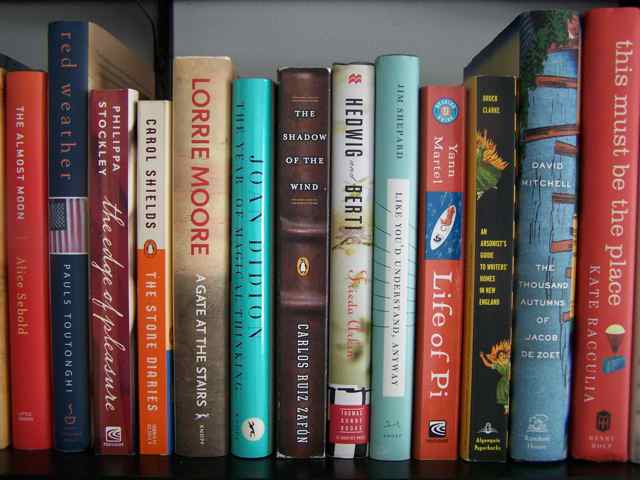 Artists aren’t thought of as the best parents, seen as expending more energy on making art than on creating a stable family life for children. In The Family Fang by Kevin Wilson, Annie and Buster Fang grow up with not just one artist parent, but two. And not just artists, but performance artists, who require their children’s participation — however reluctant — for the success of their live pieces.
Artists aren’t thought of as the best parents, seen as expending more energy on making art than on creating a stable family life for children. In The Family Fang by Kevin Wilson, Annie and Buster Fang grow up with not just one artist parent, but two. And not just artists, but performance artists, who require their children’s participation — however reluctant — for the success of their live pieces.
Scorning the “dead” forms of art like painting and photography, performance artists Camille and and Caleb Fang live for the thrill of making a scene in public, never letting on to the bewildered portion of the public, unsuspectingly participating, that this is an improvised enactment of a planned scene — an experience of spontaneous art — with the ensuing confusion or chaos surreptitiously recorded for later review.
As children, alternating between pride and embarrassment in their parents’ theatrics, Annie and Buster were known in their parents’ art circles and (more often than not) to their parents as “Child A” and “Child B.” As adults, Annie and Buster distanced themselves from their parents’ art. Annie is a talented actor who performs well but has a tendency to shock others by behaving unconventionally when off-camera. Buster is a two-time novelist suffering from writers’ block, supplementing his meager income by writing magazine articles about people with strange hobbies, like shooting potatoes from guns. After years away, Buster and Annie both end up at the Fang family home. But in a weird twist on the adult-children-returning-to-the-nest theme, their parents almost immediately disappear, leaving behind a scene of violent foul play.
Their disappearance reopens old wounds in Buster and Annie. How many times had their parents not told them the full plan, keeping their children as unsuspecting as the general public for the purposes of performing spontaneous art? They can’t tell if what seems to have been a violent abduction was real or staged. (They can’t believe it’s real; everything their parents do is in the service of their art. Isn’t it?) But if the whole scene was staged, why didn’t Caleb and Camille let Annie and Buster in on the plan? Why were they kept in the dark the same as the police and the public? Is it their punishment for deserting the family Fang to pursue their own interests? Is there even a real Fang family, or has it all been one long performance piece by their parents, with Child A and B roles that could have been filled interchangeably by children at random?
Similar in some ways to Mr. Toppit by English writer Charles Elton, The Family Fang is a darkly comic novel about adult children overshadowed by larger-than-life parents. Although The Family Fang comes down more firmly on the side of comedy than the much darker Mr. Toppit, both novels nudge readers to ponder the nature of family, the meaning of art, the culture of celebrity, the transience of life, and the possibility of happiness.
Browse inside The Family Fang at HarperCollins here.
Other opinions on The Family Fang (mostly good):
Algonquin Books Blog
Beth Fish Reads
The Broke and the Bookish
The Washington Post (Ron Charles)
Whine & Cheese
